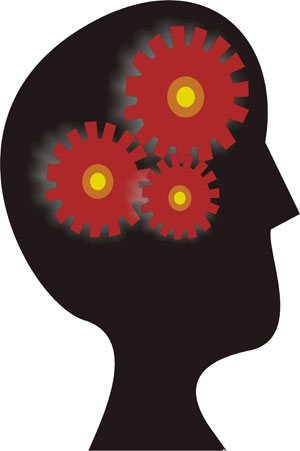
This is how a little on how my autistic mind thinks…
I just had a talk with my daughter about how she grew up with a parent with Asperger’s Syndrome (on the autism spectrum). After looking at her like she was an alien (fascinated) and saying, “I don’t get it†and asking pointed questions until she would inevitably say, “Other people just know,†I thought of toddlers.
Toddlers do parallel play. The play happily beside each other, not solo, and not group play. I’m like that with John, my partner of many years; we’re never physically far apart, yet our minds will be preoccupied with something that we’re intent on, and he’s not even an Aspie (person with Asperger’s), just the self-assured, focused, independent type. We even both work from home, but in separate offices.
I looked up “parallel play†while my daughter was downstairs on the computer and I ran across this The New Yorker article, by Tim Page, named, surprise, surprise, “Parallel Play.â€Â I was slightly miffed, yet not surprised that someone else thought of it first. That happens a lot. I suppose an idea is only considered brilliant if you think of it first. Maybe I’m just slow compared to the people who think of things first? Maybe every person thinks of things that have already been thought of? Is this a generational thing where future generations are doomed to repeat the mistakes of the past?
I went on in this line of thought for a while then started reading the article. Yes, an article about the author’s Asperger’s Syndrome. I decided that it would spur a great deal of blog posts based on the clarity of the article. I could personalize his personalizations of Asperger’s. I suppose that is hardly a unique idea either.
As I went on this tangent, I forgot to tell my daughter about parallel play. When she was ready to leave, she said, “You should come to the door and say goodbye, Mummy.â€Â I did. I hugged her and kissed her because she is my amazing, darling daughter, and I wanted to. She said, “Yes, that is what you’re supposed to do.â€Â She was smiling.
So, here I sit confused. In some year past, she (my neurotypical kid) had told me that I should see people to the door and say goodbye, and I should show emotion. I did, and from what I could tell, people liked it.
Now, she tells me that I should actually come to the door, not stand at the top of the stairs making repetitive hand movements. This makes no sense to me so I ask, “Why?â€Â She says, “I don’t know why; it’s just what people do.â€Â To me, that wasn’t an answer.
I often come up with ideas because I ask, “Why?â€Â I veer from “what is normal†in a very linear way, yet they all come together to form connections. Like in the writer of the New Yorker article, I’ve been dubbed “brilliant†and “creative†time and again, yet I don’t feel brilliant. I feel like I ask dumb questions, but as the saying goes, “There is no such thing as a dumb question.â€
I hadn’t finished reading the article, and I have so many more questions to ask my daughter about how she thinks. I also haven’t written a blog post yet based on the New Yorker article, but that will come along with a flurry of new connections.
Back to how my mind works: It’s much like following links on the internet (a linear activity) and finding the new that connects back to previous ideas on pages. Perhaps that is why we hit the “back†button on the browser to check back to earlier connections.
The connections always lead back to self-knowledge, which for anyone, Aspie or not, are the most difficult. That is why it is so easy to give advice to others, but occasionally feel lost ourselves, but that is for another blog post.
Interesting. And yet, you’ve started a blog post on that article.
I love how you and your daughter are working together. That’s priceless.
I should have known that you would notice that!